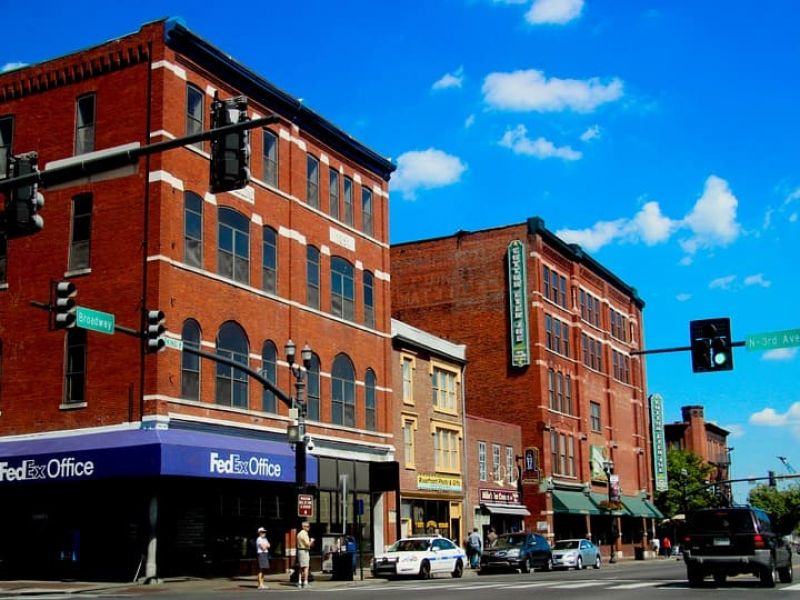Buying a new home is a significant life event, and one of the most crucial decisions you’ll make in the process is choosing the right neighborhood. The neighborhood you select will play a vital role in your daily life, affecting everything from your daily commute to the quality of schools your children attend and the overall safety of your family.
It’s a decision that can influence your long-term happiness and the value of your investment, so taking the time to make an informed choice is paramount. To help you make the best decision, here are seven valuable tips for choosing the right neighborhood, ensuring that your new home truly becomes a place where your dreams and aspirations thrive.

1. Determine Your Priorities
The first step in choosing the right neighborhood is to identify your needs and preferences. What matters most to you and your family? Consider factors like the daily commute to work, the quality of nearby schools, safety and crime rates, and the availability of amenities such as parks, grocery stores, and restaurants. Rank these priorities based on their importance to you.
It’s essential to gauge the overall community vibe. Take time to assess the atmosphere of the neighborhood and determine whether it aligns with your preferred lifestyle, whether that’s a quiet suburban setting, a vibrant urban environment, or something in between. Look into any planned or ongoing developments in the area, as they can significantly influence the neighborhood’s character and second investment property values over time.
2. Set a Realistic Budget
Before you begin house hunting, it’s essential to know what you can afford. A 2023 survey from the National Association of Realtors showed the average house price was $428,700, with most people putting down about 13% when renting vs. buying. Also, remember there are closing costs, usually between 2% to 5% of the house price. Understanding these costs upfront will help you make a well-informed budget for your home purchase.
Don’t forget to account for monthly costs like property taxes, insurance, and upkeep. While we all want that right neighborhood, it’s important not to overspend recklessly. You don’t want money troubles later on. Make sure to set aside some emergency funds for unexpected expenses. Finding the right balance between your dream home and budget can ensure a comfortable and financially secure future.
3. Research Neighborhoods
Collect as much data as you can about the neighborhoods you’re considering. Begin your research by delving into online resources, including real estate websites like our relo.ai, where you can often find valuable information about property values, market trends, and local amenities. Become a part of local community forums to gain a deeper understanding of the neighborhood’s unique characteristics.
Consider visiting the neighborhoods during different times of the day and week to observe the daily routines and atmosphere. Don’t hesitate to engage with current residents to gain firsthand knowledge about what it’s like to live there, as their experiences can be invaluable in your decision-making process. Explore local events and activities to see how the community comes alive and whether it aligns with your lifestyle.
Here are some specific things to ask current residents about:
- Crime rates: How safe do you feel walking around the neighborhood at night?
- Schools: Are you satisfied with the quality of the local schools?
- Community: What is the sense of community like in the neighborhood?
- Traffic: Is traffic a major problem in the area?
- Commute: How long is your commute to work or school?
Also read: 7 Common Mistakes to Avoid During Student Relocation
4. Evaluate Neighborhood Characteristics
When researching neighborhoods, pay close attention to several key characteristics. Examine property values and trends, as this can impact your investment’s long-term value. Investigate crime rates and overall safety levels to ensure your family’s well-being. Assess the quality of nearby schools and educational facilities if you have children or plan to in the future.
Consider the accessibility and proximity to healthcare services, as well as the availability of public transportation, which can greatly influence your daily life in the neighborhood. Take note of the local recreational opportunities and green spaces to see if they align with your leisure and outdoor interests. Assess the local job market and commute options to ensure a convenient and efficient daily work routine.
5. Consider Future Trends
Predicting the future of a neighborhood is crucial when making a long-term real estate investment. Research potential developments and growth patterns. An area that is currently up-and-coming may offer excellent value, but it’s essential to evaluate how future developments might affect property values and your overall quality of life. Consider job trends and economic stability, which affect neighborhood value.
Keep an eye on local zoning regulations and infrastructure projects that could impact the neighborhood’s appeal and convenience over time. Don’t forget to check for any potential environmental or sustainability initiatives that might shape the area’s future. Stay informed about community engagement and development plans to make a well-rounded assessment of the neighborhood’s long-term prospects.
6. Visit the Neighborhoods
Nothing can replace the experience of visiting a neighborhood in person. Schedule visits to your top neighborhood choices and explore the area at different times of the day and week. Pay attention to the ambiance, traffic patterns, and the overall vibe of the community. Take note of your impressions and feelings during these visits, as they can be instrumental in your decision-making process.
Engage with local residents and ask about their experiences living in the neighborhood to gain valuable insights. Explore nearby amenities and conveniences that could enhance your daily life. Consider the commute to your workplace and the accessibility of public transportation options during your visits. Don’t forget to observe the overall maintenance and cleanliness of the right neighborhood.
7. Make an Informed Decision
After conducting thorough research and considering all the factors, it’s time to make an informed relocation decision. Weigh the pros and cons of each neighborhood, revisit your priorities and budget, and choose the one that aligns best with your needs and goals. Remember that this decision is not just about buying a house; it’s about finding a place to call home. Consult your real estate agent for market trend alignment and future potential.
Seek feedback from friends and family members to gather valuable opinions from those who know you well. Visit the neighborhood one more time, perhaps during the weekend and at night, to gain deeper insights into its atmosphere and comfort level under different conditions. Ultimately, trust your instincts, as your gut feeling often plays a significant and intuitive role in finding the right neighborhood to settle in.
Finding the Right Neighborhood with Relo.AI ?
RELO.ai offers an innovative platform designed to simplify the process of finding the right neighborhood, making it a stress-free and straightforward experience. Our platform guides you through each step of your transition to a new location.
Our services are tailored to cater to your individual needs, ensuring a smooth and responsible relocation process. ?
Schedule a consultation today to discover how we can help you find the ideal neighborhood for your journey.
Complete the form to kickstart your relocation experience.
As a Final Note
When it comes to buying a new home, picking the right neighborhood is a big deal. It sets the stage for your long-term happiness and building financial wealth. With these seven tips, you can make a more informed decision that matches your priorities, budget, and lifestyle. This way, you’ll enjoy peace of mind for years to come.
Remember, it’s not just about the house itself; it’s about discovering that perfect place for you and your family to thrive. So, don’t rush the process. Take the time to research and explore until you find a neighborhood that truly feels like home. Your dream right neighborhood is out there, ready to be the backdrop for those cherished memories you’ll create.









